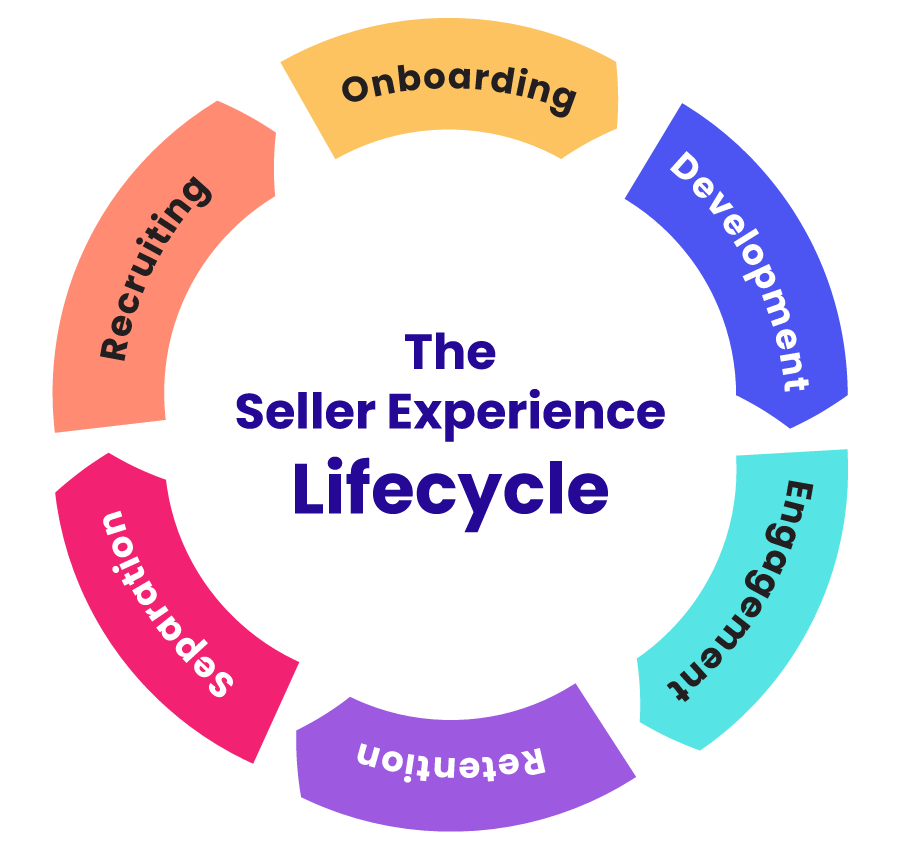I need you to do more with less. If you’ve been told something similar in recent months, you’re not alone. Tech companies are buckling down for what many predict will be a severe and lengthy economic down turn.
According to a survey of 400 leaders of large US companies by KPMG, 91% are predicting a recession in the next 12 months. What’s more, the survey found that only 34% of these CEOs think the recession will be mild and short.
A survey of mid-market companies conducted last month by accounting and advisory firm Marcum LLP and Hofstra University’s Frank G. Zarb School of Business showed that more than 90% of CEOs of mid-sized companies are concerned about a recession. More than a quarter of these CEOs said they have already begun layoffs or plan to do so within the next 12 months (source).
In times like these, it’s second nature for organizations to revert to a do more with less mentality. And. whether you agree with this mindset or not, you’ll likely be asked to follow suit at some point in your career.
So, today, we explore five ways to double down on Seller Experience to save money, bring in more revenue, and ultimately create an environment where sales professionals can thrive– even in the face of hardship.
But first, what is Seller Experience and why does it have such a major impact on your bottom line?
Defining Seller Experience
Seller experience is the culmination of everything a seller does, sees, feels, learns, and experiences at every stage of the employee lifecycle– from recruiting and onboarding through their last day on the job.

Seller experience differs from employee experience in one critical way– while employee experience encompasses all employees, seller experience focuses on the nuance and complexity unique to sales teams and how their collective experience impacts revenue.
The way sellers think and feel about your organization doesn’t just impact their motivation and output, but also how they interact with buyers. Seller Experience is intrinsically linked to customer experience— but too many organizations punt seller engagement and job satisfaction to HR, where it gets buried under broader employee experience initiatives.
Unless HR is fully entrenched in the complexity of modern sales teams, they’re ill-equipped to tackle sources of friction that inhibit sellers from bringing their A-game and delivering the standout experiences modern buyers now expect.
Where Your Seller Experience is Costing You
So, why does seller experience matter and how is it going to help your organization during financial hardship?
The short and long of it is this: Seller Experience is directly connected to revenue. When sales reps are happy, engaged, and supported they’re able to provide prospects and customers with a better experience. When sales reps are unhappy, disengaged, and unsupported, organizations find it more difficult to generate revenue, close deals, and retain customers.
At the same time, a disengaged sales force with high rates of sales turnover is incredibly costly. So, not only do organizations find it harder to generate revenue, but they’re also spending at alarming rates to keep up with costs associated with lost productivity, recruiting and hiring, and new rep ramp times.
Unfortunately, a poor Seller Experience is no longer the exception– it’s the norm. Modern sales organizations are currently in a state of crisis. Consider these statistics (source):
- 89% of sellers are burnt out
- 59% of sellers think management doesn’t know how to effectively motivate teams
- 54% of sellers are actively looking for a new job
- 67% of sellers feel management is overly optimistic and disconnected from reality
Morale is at an all time low and sales turnover is at a record breaking high. So how can a CRO remedy this issue and create a recession-proof sales organization?
By doubling down on Seller Experience.
Small changes to make that will have you spending less and winning more as a sales team:
Improving Seller Experience doesn’t have to be a complicated process and it doesn’t need to involve a complete overhaul of existing processes. Instead of attempting to reform the entire Seller Experience with sweeping, organization-wide changes, we recommend starting small and doing what you can with the resources available to you.
Here are a few ways to improve your Seller Experience and do more with less in 2023:
Consider your comp plans.
Let’s address something that, although obvious, often goes unstated during conversations about sales compensation. People seek and secure employment as a means to an end– and that end is to earn a living wage. Yes, employment also provides purpose, fulfillment, friendships, and more– but, the primary goal of employment– for most people– is to earn money.
Something else to consider: A shocking 89% of sales turnover is caused by deficient or unclear compensation (source).
That’s why we recommend reviewing your comp plans to ensure you’re spending efficiently, motivating effectively, and ultimately doing right by your sales reps. An ineffective compensation plan motivates and incentivizes the wrong behaviors and doesn’t fulfill the needs of your team. This can have downstream effects that dramatically inhibit your ability to hit revenue targets.
So, what are the signs that your comp plan is working against you rather than for you?
- Your sales team spends more time keeping track of their own commission statements than they do selling.
- Your sales leaders spend an inordinate amount of time answering comp related questions.
- You often see reps focusing more on how to game the system than on quality sales activities.
We’ve spent a lot of time on the topic of sales compensation so we won’t go into much more detail here. But here are some resources we recommend checking out to improve performance and rep experience by retooling your comp plans:
- 6 Signs Your Commission Management Solution is Working Against You
- How to Motivate Sales Managers with Compensation Strategy
- Creating Compensation Plans for Sales Engineers
- 23 Quotes to Guide Your Sales Compensation Planning Process
- 4 Reasons to Automate Your Sales Commission Process
Eliminate manual or administrative tasks with automation.
Working in sales leaves employees uniquely susceptible to burnout for a few reasons– performance-based compensation, high pressure environment, visibility within an organization, and unattainable goals to name a few.
When a sales rep becomes burnt out, they no longer perform at the best of their ability and you run the risk of losing them to a different organization entirely. And, as we already cited, a shocking number of sales reps already report that they’re suffering from burnout. So talks of prevention are useless and the priority becomes intervention.
The best way to reduce crisis-levels of burnout is to use automation and technology to eliminate manual or administrative tasks so your reps can get back to doing what they do best– selling. We’ve written an entire article on ways to reduce sales burnout with automation, check it out: Using Automation to Address Sales Burnout.
Align GTM teams around a singular comms strategy.
GTM teams– product marketing, marketing, sales, sales enablement, etc– the teams critical for positioning and selling your products often operate in silos like a giant game of telephone.
Product teams plan to release features or functionality and pass along critical information to or often partner with product marketing. Product marketing puts their own spin on things and passes it off to demand gen, customer marketing, content, and digital teams. Then demand gen and customer marketing pass on what they know to sales enablement and eventually sales teams.
Unless you run an impossibly tight ship with rock solid communication pathways, it’s no wonder things can get lost in translation. Instead of crossing your fingers and hoping the right information makes it to sales intact, unite GTM leadership around a singular comms plan for each and every release.
Decide up front what the most important takeaways are, what the changes mean for core personas, what the value proposition is, and your plan to train sales reps on new information. This will allow for a more effective enablement process and a more effective sales motion.
Your Seller Experience depends on your ability to give your sellers the tools and resources they need to be successful. This includes enablement, information, content, and more. If reps are constantly given the telephone version of your product and feature benefits, you can’t then expect them to hit the goals set before them.
Budget for ongoing training across all levels.
Ongoing training is often viewed as a nice-to-have or as a band aid solution used to solve problems as they come up. But, taking a more proactive approach to training and building it into your annual budget will help you reap additional benefits.
This ensures you have the resources you need to prevent deterioration in skill sets or product knowledge gaps and keeps the team up-to-date on industry trends and selling tactics. This can lead to increased sales, better customer service, and improved sales performance.
And, of course, providing training can help to keep team members motivated and engaged, which can lead to improved retention rates– which is particularly important in the face of a recession.
Get involved with hiring processes.
As we mentioned early on in this post, Seller Experience is often left to HR and bucketed under broader employee experience initiatives– where, truthfully, it’s often neglected. This isn’t a result of HR mismanagement or even a lack of talent. It’s simply a byproduct of a function that has a unique set of needs that HR isn’t often trained to handle.
For this reason, we recommend getting involved with Seller Experience from the very first touchpoint– at least until you’re confident you know what the hiring process and onboarding experience looks like and that you’re happy with the results of these processes.
This means:
- Reviewing job descriptions: If you’re not writing your sales job descriptions, be sure you’re reviewing them periodically to confirm that they’re in line with your expectations and haven’t evolved or aged in a way that no longer serves you.
- Sitting in on screenings: If you’re not screening candidates, have you ever listened into a screening or watched a recording of a screening to make sure you and your recruiting team are in lock step?
- Providing examples of your ideal candidates: If you have help with sourcing cold candidates, be sure to give your recruiter actual examples of the types of people you’re hoping to interview.
Although this may seem tedious or outside the scope of your role, it’s important as a leader to ensure your Seller Experience is in line with your expectations from start to finish.
Final Thoughts
Before we sign off we’ll leave you with this final thought: an engaged and motivated sales team impacts factors beyond your reputation as an employer. Seller Experience should be treated as a function of your revenue motion– something that can be leveraged strategically to generate additional interest in and revenue for your business.
As we get closer to the worst of the predicted recession, there will be fewer levers to pull and less money to spend in order to help you hit your revenue targets. Seller Experience is one of them. To learn more about Seller Experience in detail, we recommend you check out our latest eBook: The Seller Experience Handbook.
About Spiff
Spiff is a new class of software that creates trust across the organization by delivering real-time automation of commission calculations and motivates teams to drive top-line growth. With a combination of an intuitive UI, real-time visibility, and seamless integrations into current systems, Spiff is the first choice among high-growth businesses. Spiff’s sales commission software enables finance and sales operations teams to self-manage complex incentive compensation plans and provides transparency for sales teams.






